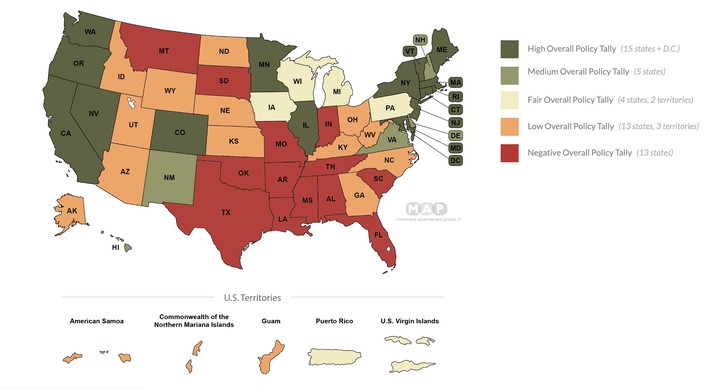Structural Stigma and Suicidal Thoughts and Behavior
 LGBTQ Equality by State. Credit: Movement Advancement Project
LGBTQ Equality by State. Credit: Movement Advancement ProjectObjective
To determine how a statewide indicator of structural stigma is associated with suicidal thoughts and behaviors among sexual minority (SM) adolescents.
Method
We examined associations between structural stigma at the state level and suicidal thoughts and behaviors in a nationwide sample of sexual minority adolescents ages 14–18 in the United States (n=489) who completed a cross-sectional online survey in 2018.
Results
DState-level structural stigma was positively associated with higher levels of lifetime suicidal ideation after adjusting for demographic variables (OR = 1.345; p = .045). However, lifetime suicidal planning and suicide attempt were not related to structural stigma.
Conclusion
Sexual minority youth living in states with more structural stigma had a higher likelihood of experiencing lifetime suicidal ideation. Reducing risk for suicidal behavior among SM youth is a pressing public health concern. Public policies, societal conditions, and public attitudes that contribute to an affirming and inclusive environment for sexual minority youth have the potential to reduce suicidal ideation among sexual minority adolescents.
Citation
Schumacher, E.*, Chang, Y.*, Martino, R., Maheux, A., Choukas-Bradley, S., Salk, R., & Thoma, B. (Under Review). Structural Stigma and Suicidal Thoughts and Behavior Among U.S. Sexual Minority Youth.
Read more
This paper is currently under review at American Journal of Public Health and I will update and share the open-source code once the paper is accepted.